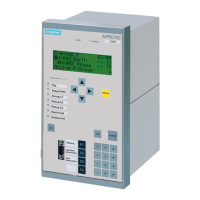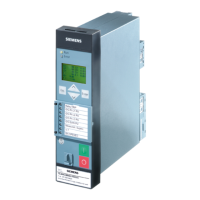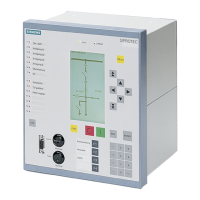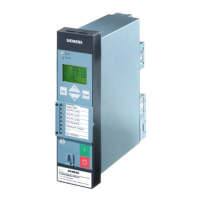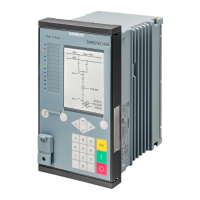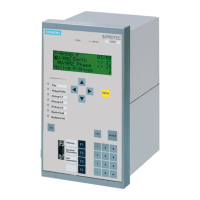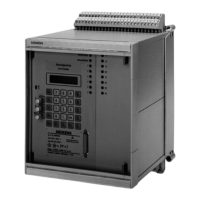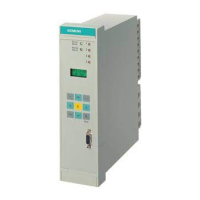Application Scope
The numerical, multi-functional SIPROTEC 4 7SJ61 is a versatile device designed for protection, control and
monitoring of busbar feeders. For line protection, the device can be used in networks with earthed, low resist-
ance earthed, isolated or compensated neutral point. It is suited for networks that are radial and supplied from
a single source or open looped networks. The device is equipped with motor protection applicable for asyn-
chronous machines of all sizes.
The device includes the functions that are necessary for protection, for monitoring of circuit breaker positions,
and control of the circuit breakers in straight bus applications or breaker-and-a-half configurations; therefore,
the devices can be universally employed. The devices also provide excellent backup facilities of differential
protective schemes of lines, transformers, generators, motors, and busbars of all voltage levels.
Protective Functions
Non-directional overcurrent protection (50, 50N, 51, 51N) is the basis of the device. There are three definite
time overcurrent protective elements and one inverse time element for the phase currents and the ground
current. For inverse time overcurrent protective elements, several curves of different standards are provided.
Alternatively, user-defined characteristic can be programmed.
Depending on the variant ordered, the overcurrent time protection can feature breaker failure protection and
ground fault protection for high-resistence ground short-circuits and faults.
In addition to the fault protection functions already mentioned, other protective functions are available. Some
of them depend on the version of the device that is ordered. These additional functions include negative
sequence protection (46), thermal overload protection (49) with start inhibit for motors (66/68), and motor
starting protection (48), as well as automatic reclosing (79) which allows different reclosing cycles on over-
head lines. An automatic reclosing system may also be connected externally.
A protection feature can be ordered for the detection of intermittent ground faults which detects and accumu-
lates transient ground faults.
External detectors account for ambient temperatures or coolant temperatures (by means of an external
RTDbox).
Control Functions
The device features a control function for activating and deactivating switchgears via the integrated operator
panel, the system interface, binary inputs, and the serial port using a personal computer with DIGSI.
The status of the primary equipment can be transmitted to the device via auxiliary contacts connected to
binary inputs. The present status (or position) of the primary equipment can be displayed on the device, and
used for interlocking or alarm condition monitoring. The number of operating equipments to be switched is
limited by the binary inputs and outputs available in the device or the binary inputs and outputs allocated for
the switch position indications. Depending on the primary equipment being controlled, one binary input
(single point indication) or two binary inputs (double point indication) may be used for this process.
The capability of switching primary equipment can be restricted by a setting associated with switching
authority (Remote or Local), and by the operating mode (interlocked/non-interlocked, with or without pass-
word request).
Processing of interlocking conditions for switching (e.g. switchgear interlocking) can be established with the
aid of integrated, user-configurable logic functions.
Messages and Measured Values; Recording of Event and Fault Data
The operational indications provide information about conditions in the power system and the device. Meas-
urement quantities and values that are calculated can be displayed locally and communicated via the serial
interfaces.
Device messages can be assigned to a number of LEDs on the front cover (allocatable), can be externally
processed via output contacts (allocatable), linked with user-definable logic functions and/or issued via serial
interfaces.
During a fault (system fault) important events and changes in conditions are saved in fault protocols (Event
Log or Trip Log). Instantaneous fault values are also saved in the device and may be analyzed subsequently.
1.2
Introduction
1.2 Application Scope
20 SIPROTEC 4, 7SJ61, Manual
C53000-G1140-C210-6, Edition 05.2016
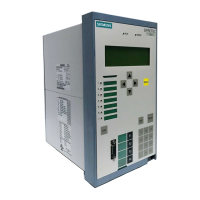
